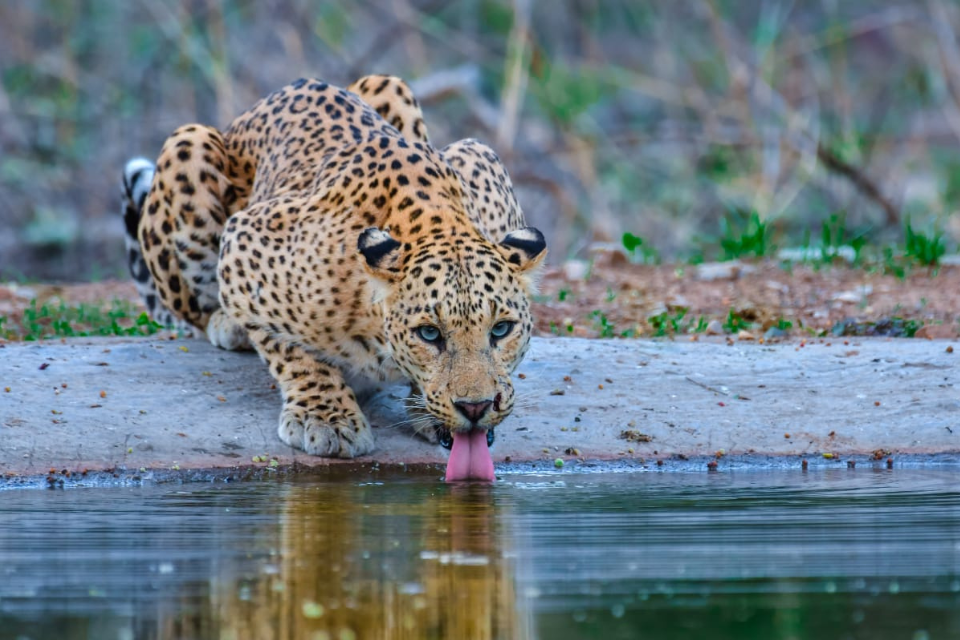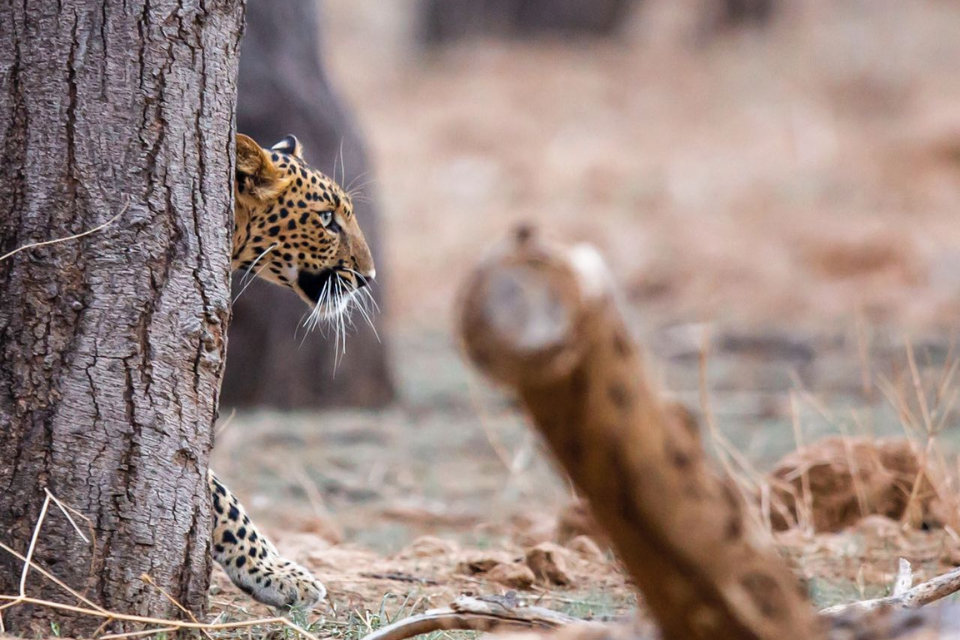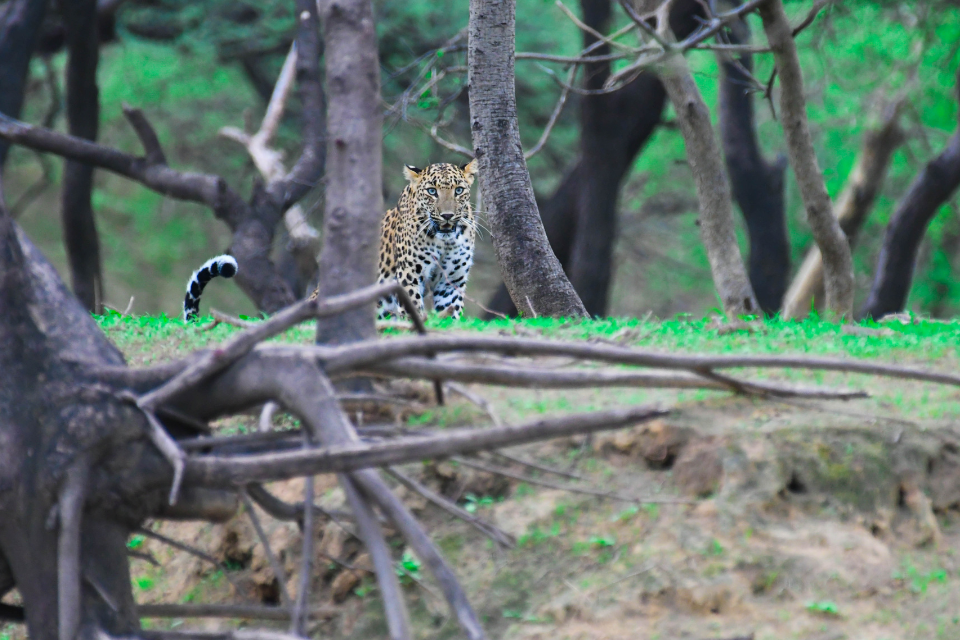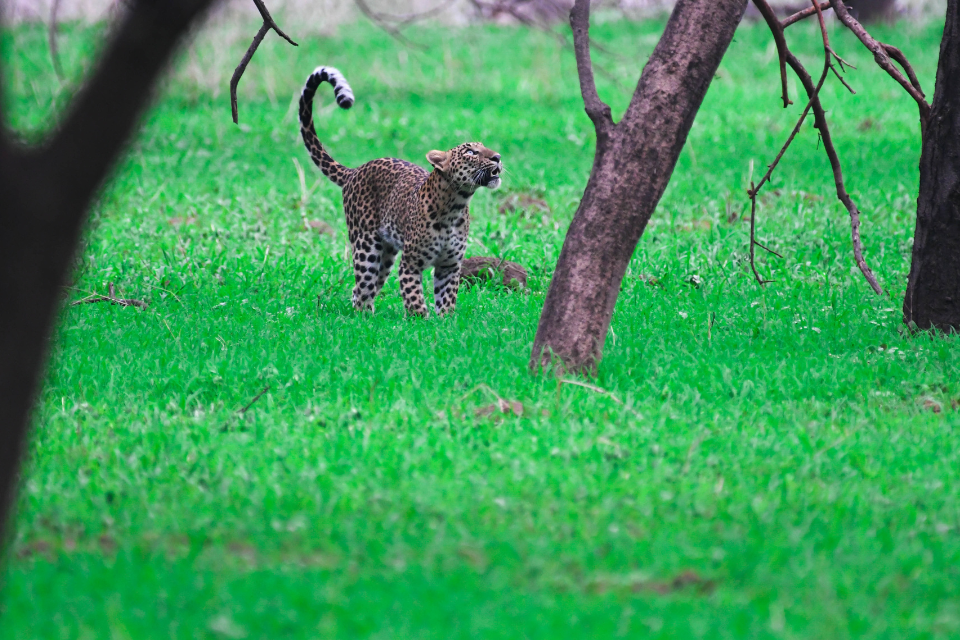- April 9, 2025
Ranthambore’s Tigers: A Century of Survival Against All Odds
Ranthambore National Park is one of India’s most iconic tiger reserves, a place where history, wildlife, and conservation collide. Nestled in the heart of Rajasthan, it is home to some of the world’s most famous and resilient tigers, who have survived poaching, habitat loss, and near extinction over the past century.
From the days of royal hunts to modern conservation victories, Ranthambore’s tigers have faced countless challenges—yet they continue to thrive, proving that dedicated efforts can save even the most endangered species.
Let’s take a journey through the incredible survival story of Ranthambore’s tigers, their struggles, and the efforts that have made this reserve a global success in tiger conservation.
- The Royal Hunting Era – When Tigers Were in Danger
Before becoming a protected reserve, Ranthambore was one of the prime hunting grounds for Rajput kings and British officers.
✔ Maharajas of Jaipur and British rulers frequently organized shikar (royal hunts) in the forests of Ranthambore.
✔ Tigers were hunted for sport, trophies, and as a display of power.
✔ The park’s natural lakes and dense forests made it an ideal habitat, attracting some of India’s largest tiger populations.
🚀 Fact: In the early 1900s, a single hunting expedition could kill over a dozen tigers in a week!
📉 The Decline – From Over 200 Tigers to Near Extinction
By the mid-20th century, indiscriminate hunting, habitat destruction, and human encroachment had caused a drastic drop in Ranthambore’s tiger numbers.
❌ By 1970, fewer than 30 tigers remained in Ranthambore.
❌ Deforestation and expanding villages further threatened their survival.
❌ Poaching increased as tiger skins, bones, and body parts were illegally traded.
🚀 Turning Point: The crisis led to one of India’s biggest conservation efforts—Project Tiger.
- Project Tiger: Saving Ranthambore’s Last Tigers
In 1973, the Indian government launched Project Tiger, a nationwide initiative to protect tigers and their habitats. Ranthambore became one of the first nine tiger reserves in India, marking the beginning of its conservation success story.
Key Conservation Actions
✔ Ranthambore was declared a wildlife sanctuary in 1955 and later a tiger reserve in 1973 under Project Tiger.
✔ Strict anti-poaching measures were introduced.
✔ Local communities were relocated from core tiger zones to reduce human-wildlife conflict.
🚀 Success Story: By the 1990s, Ranthambore’s tiger population started recovering, reaching over 40 tigers!

- Ranthambore’s Most Famous Tigers – Legends of the Wild
Over the years, Ranthambore has been home to some of India’s most legendary tigers, each with its own unique story.
🐅 A. Machhli – The Queen of Ranthambore
📍 Years Active: 1996–2016
✔ Known as India’s most famous tigress.
✔ Fought and killed crocodiles, proving her incredible strength.
✔ Gave birth to multiple litters, helping restore Ranthambore’s tiger population.
🚀 Fun Fact: Machhli lived for 20 years, making her one of the longest-living wild tigers in the world!
🐅 B. T-24 (Ustad) – The Fearless Warrior
📍 Years Active: 2006–2015
✔ A dominant male tiger known for his aggression and boldness.
✔ Became famous for roaming fearlessly near Ranthambore Fort and villages.
✔ Involved in multiple human-tiger conflicts, leading to his controversial relocation to a zoo in 2015.
🚀 Debate: Conservationists still argue whether Ustad was unfairly removed from the wild.
🐅 C. T-39 (Noor) – The Queen of Lakes
📍 Years Active: 2010–Present
✔ A beautiful tigress known for her grace and intelligence.
✔ Famous for raising multiple cubs near Ranthambore’s lakes.
✔ One of the most photographed tigers in the world!
🚀 Fun Fact: Noor’s cubs have helped increase Ranthambore’s tiger population.
- The Challenges of Tiger Conservation in Ranthambore
Despite its conservation success, Ranthambore’s tigers still face major threats:
⚠️ A. Poaching & Illegal Wildlife Trade
❌ Tiger skins, bones, and body parts are still in demand in illegal markets.
❌ Poachers use steel traps and poison to kill tigers.
🚀 Success: Increased anti-poaching patrols have drastically reduced poaching incidents in Ranthambore.
⚠️ B. Habitat Loss & Shrinking Territory
❌ Ranthambore is only 1,334 sq. km, too small for its growing tiger population.
❌ As tigers multiply, they need more space, leading to territorial fights.
🚀 Solution: Authorities are creating wildlife corridors to connect Ranthambore with other tiger reserves.
⚠️ C. Human-Wildlife Conflict
❌ Tigers sometimes stray into nearby villages, attacking livestock.
❌ Villagers retaliate by poisoning or killing tigers.
🚀 Solution: Government compensation for farmers who lose livestock has reduced revenge killings.
- The Future of Ranthambore’s Tigers – What’s Next?
✔ Tiger numbers have increased, but more action is needed to ensure long-term survival.
✔ Expanding protected areas and improving wildlife corridors will be key.
✔ Eco-tourism and community involvement will play a vital role in conservation.
🚀 What’s Next?
✅ Creating more buffer zones to allow tigers to roam freely.
✅ Strengthening tiger protection laws.
✅ Expanding Ranthambore’s wildlife corridors to Sariska and Kailadevi.
🌍 Final Thought: Ranthambore’s tigers have survived hunting, poaching, and habitat destruction, proving that strong conservation efforts can bring species back from the brink of extinction.
🔍 Have you ever seen a tiger in Ranthambore?
Disclaimer All images used in this blog are either sourced from public domain or credited to their respective owners. If you are the copyright holder of any image and wish to request its removal or proper attribution, please contact us at [email protected]














